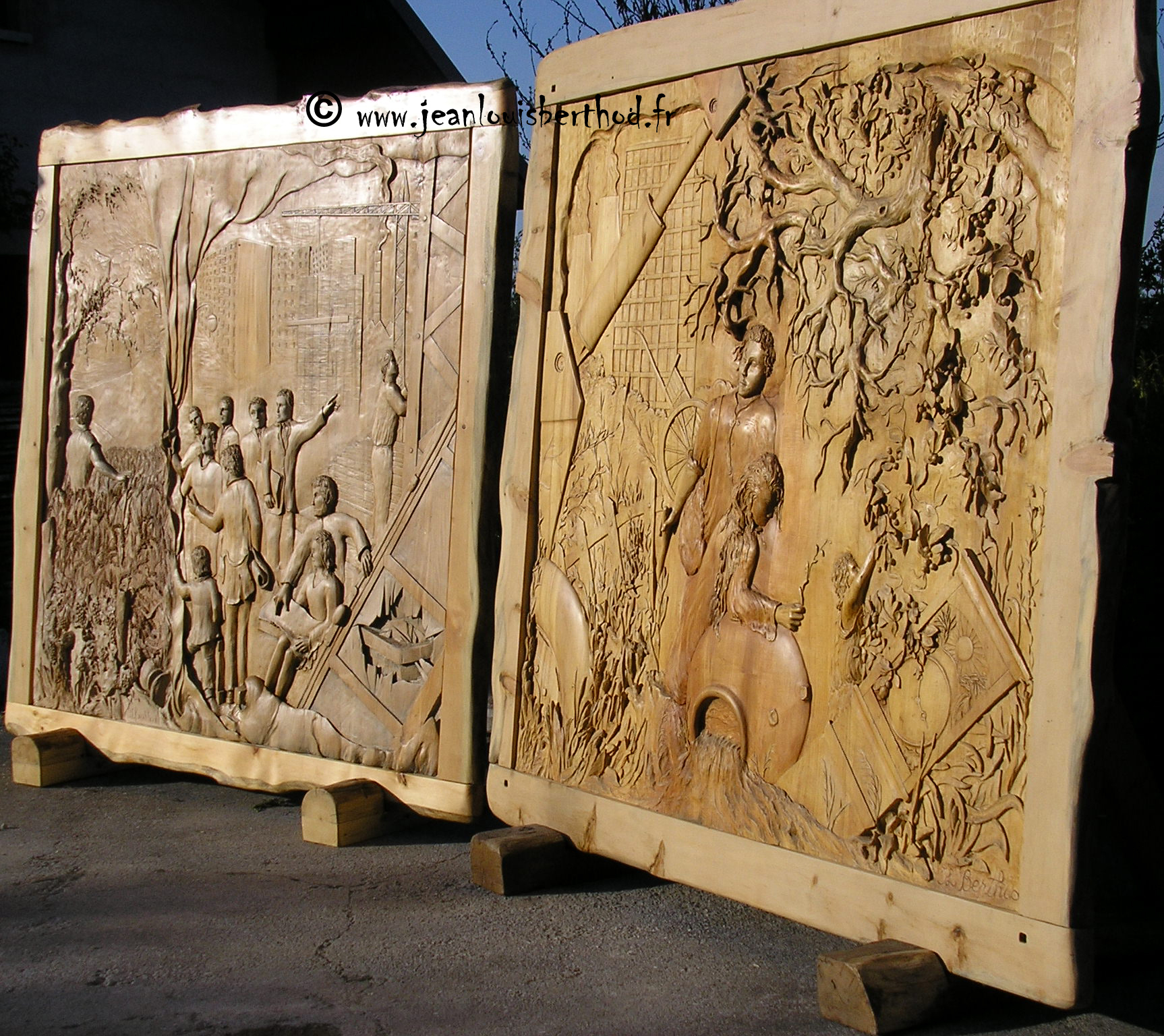
Years of realization : 1999 the right one ; 2004 the left one.
Wood used : Lime tree
Dimensions : Width 235 cms / Height 215 cms (Both boards ; Without the frames)
The left board represents the traditional countryside. The nature, the harvests and the wealth of the land.
The urban development spreads its influence. The education becomes widespread, the customs evolve.
The characters are forward-looking, a part of them take a look curious and marked with nostalgia by moving away the hanging, the symbolic border between times.
On the right, an old window of which a pane is broken. Behind it, generations have looked to the outside world with desire, hoping for another life, for a more comfortable future.
The right board is a tribute to the people of the earth who during generations trained our landscape for the price of a life of daily hard labour and big sacrifices, in the time when the nourishing earth left little space for free time.
Today, in our hands, this treasure seems to belong to us and we have it by forgetting to whom we owe it. We wait for natural resources and for the soil to adapt themselves to our most disproportionate requirements.
In the center of the board, a man, a farmer or a son of farmer, leaned on a tool, goes away by turning around. Sat on a stump, a pensive woman is leaned on jar knocked down earthenware jar from where it flows by the water, the endangered wealth. She represents the woman, but also the nature. She holds between her fingers a stem, a bud or a cutting, she is the one that passes down life.
Dominating the scene, a jack, a symbol of the mechanization. Although complementary, it is a form of opposition to the arm, to the human muscle. A tyre crushes the grass and the ears at the same time as it pushes aside a barrier, derisory opposition. At the end, large sets and fireplaces of power plants, symbolize the urban and industrial advance. An abandoned cart accentuates the disproportion with the current resources. The shock between the progress and the nature is represented by a broken and dried out branch. However, the remaining branches still produce fruits.
A child, a symbol of the future generations, picks fruits, continuing to live with what we leave him.
Finally, an inclined clock, submerged by the water that escapes, is the image of time, but also of the often manhandled heritage.
Access to the photo album dedicated to this work by clicking here.